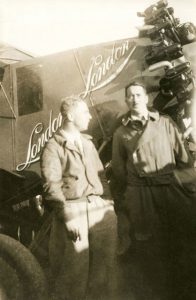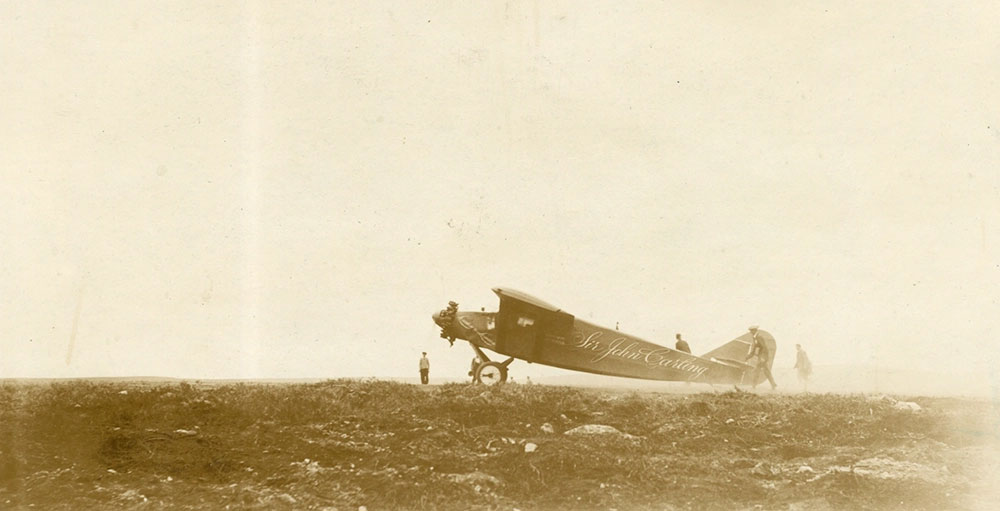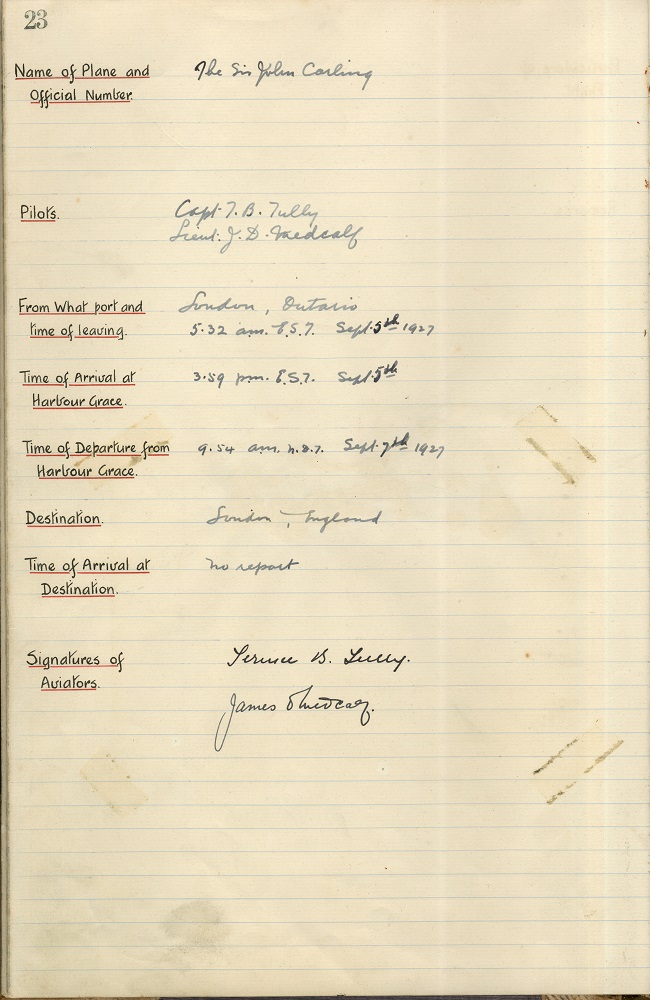Disaster Strikes: The Sir John Carling (1927)
Brave aviators sought glory when they challenged the Atlantic, at a cost of serious risk. By 1927, twenty transatlantic flights had ended in disaster. The new Harbour Grace airstrip would soon have its own share of tragedy, the first occurring just weeks after the airstrip’s official opening.
Beyond praise for pilots, transatlantic aviation offered important promotional benefits to corporations. Arthur Carty, part-owner of the London Free Press, and Charles Burns, president of Carling Breweries, saw such an opportunity. Together, they offered $25,000 to a team of pilots willing to fly from London, Ontario, to London, England.
Pilot Terence Tully and navigator James Medcalf, two Royal Air Force veterans, were chosen for the task. Their aircraft was a Stinson Detroiter monoplane, named the Sir John Carling after the brewery founder and Canadian politician.
The plane was painted in the company’s distinguished green, with “London to London” written on its sides.
Tully and Medcalf’s flight faced hardships from the very beginning. Their first attempt to reach Harbour Grace in August was unsuccessful.
Due to weather, the crew had to turn back over Lake Ontario. After this delay, one newspaper mockingly suggested the plane be renamed the Cat or the Boomerang. But they were determined and attempted the flight again, arriving in Harbour Grace on September 5, 1927.
Hardships continued after arriving in Newfoundland. During refueling, a lamp ignited gasoline spilt near the plane. The plane was not visibly damaged, but the crew did a complete overhaul to ensure its proper working order.
News then reached the airstrip that another transatlantic flyer, the Old Glory, had crashed into the ocean, 350 miles east of Cape Race, Newfoundland. Fearlessly, the preparations continued for Tully and Medcalf, and the Sir John Carling headed across the Atlantic on the morning of September 7.
For those spectators gathered at the airstrip that morning, they were the last to see Tully and Medcalf alive. The two never arrived at Croydon airport in England.
The SS Kyle attempted a rescue. And while the steamship did recover some remains of the Old Glory, the wreckage of the Sir John Carling was never found.




